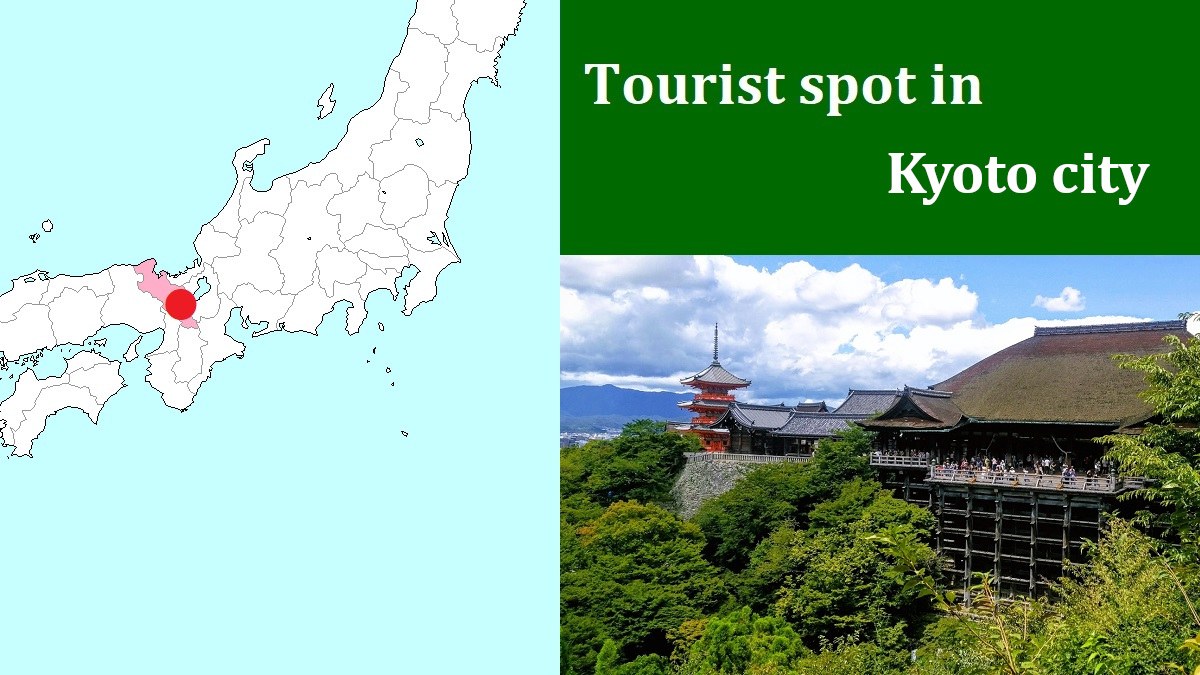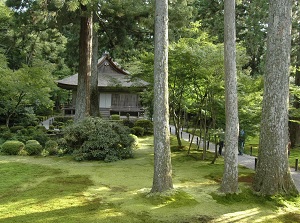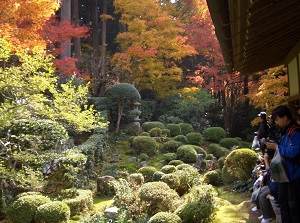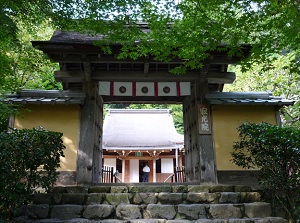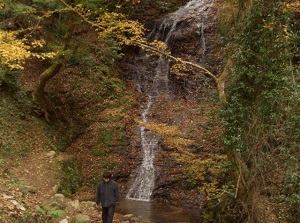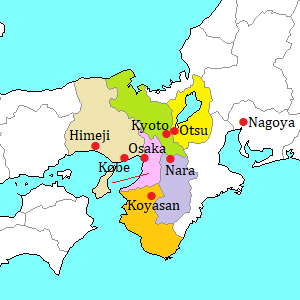Ohara district [大原]

Ohara district
Photo by Kyoto Free Photo
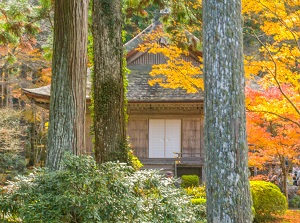
Sanzen-in in Ohara
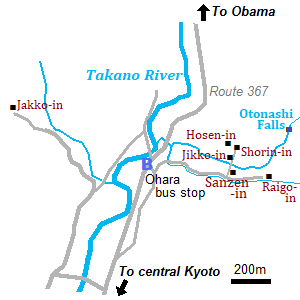
Ohara is a district located about 20 km northeast of central Kyoto.
"O" in the word is pronounced long, so it is read as "Ôhara".
It is in the valley formed by Takano River flowing into Kamo River at its downstream.
There is Mount Hiei about 7 km south of this district.
This district had been a stopping point of the important road connecting Kyoto and Obama city facing the Sea of Japan.
And when civil wars or political wars occured in ancient times, key figures escaped from Kyoto through this district.
Also, the hermits from Kyoto had lived around this district in such times.
Ohara is close to Enryakuji temple on Mount Hiei, so several temples of Tendai school of Buddhism had been founded since the 8th century.
Such temples are dotted in the mountain village of Ohara.
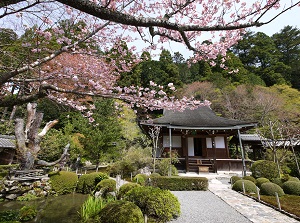
Jakko-in in spring
Photo by Kyoto Free Photo
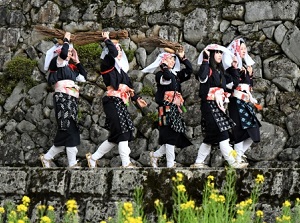
Oharame in Ohara district
Photo by KYOTOdesign
Until the early 20th century, the mountain of Ohara had produced firewood and brushwood.
And women in Ohara went to sell them to the central Kyoto.
The woman was called Oharame.
Oharame wore traditional clothes for farming and walked with the goods put on the head.
The clothes becomes popular as a symbol of Ohara, and we can find them as a tourist attraction in Ohara.
Sanzen-in (三千院)

Sanzen-in is a Buddhist temple of Tendai school founded by high priest Saicho in 788, and is the central temple in Ohara district.
First, Sanzen-in was founded in Mount Hiei.
In this site, current Oujou-Gokurakuin temple was built as a training hall in the 12th century.
And, in 1871, main temple was moved to current site and Sanzen-in was formed.
The precinct is about 200 meters from east to west and about 100 meters from north to south.
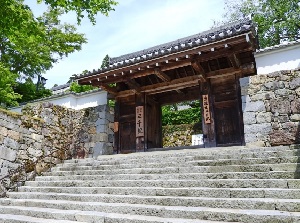
Gotenmon in Sanzan-in
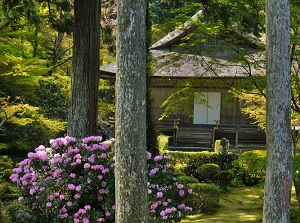
Oujou-Gokurakuin in spring
Photo by Kyoto Free Photo
The main gate Gotenmon (御殿門) is on the west side of the precinct.
It is unique because the side is surrounded with stone walls like a castle.
The main buildings are near the west side.
And, there is the oldest Oujou-Gokurakuin (往生極楽院) in the center of the precinct.
The other part of the precinct is beautiful garden covered with moss.
And there are two beautiful Japanese gardens.
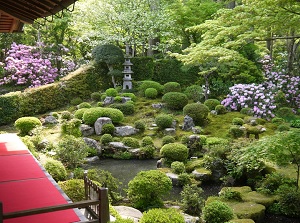
Shuhekien in Sanzen-in
Photo by Kyoto Free Photo
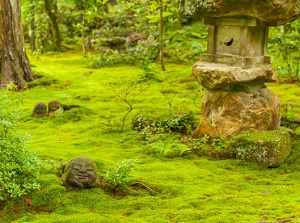
Warabe Jizou in Yuseien
Shûhekien (聚碧園) is a garden with various trees.
Yûseien (有清園) is a garden that the field of moss is beautiful.
And, in this garden, some Warabe Jizou are dotted in the ground.
They are the stone statues of guardian diety of children.
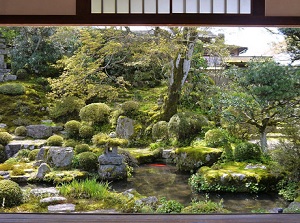
Japanese garden in Jikko-in
Photo by Kyoto Free Photo
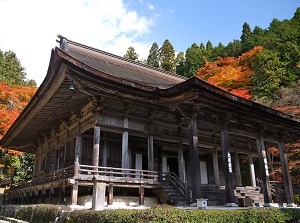
Shorin-in
Photo by Kyoto Free Photo

Jikko-in (実光院)
Jikko-in is a small temple rebuilt in the early 15th century.
The last "o" is pronounced long, so it is read as "Jikkô-in".
It is located just north of Sanzen-in, and its main hall is Shôrin-in next to this temple.
There are two Japanese gardens.
Cherry trees blooming in autumn are unique, and we can enjoy the garden during all seasons.
Shorin-in (勝林院)
Shorin-in is a temple located just north of Jikko-in.
"O" in the word is pronounced long, so it is read as "Shôren-in".
This temple was founded in 835 and current main temple was rebuilt in 1778.
In 1186, two high priests, Kenshin and Honen, had a hot discussion in this temple, so this temple has been called "Temple of questions and answers".
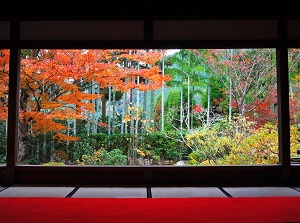
Japanese garden in Hosen-in
Photo by Kyoto Free Photo
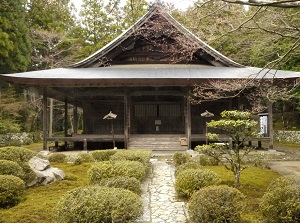
Raigo-in
Photo by Kyoto Free Photo
Hosen-in (宝泉院)
Hosen-in is a temple just next to Shorin-in, and was founded in the 1230s.
"O" in the word is pronounced long, so it is read as "Hôsen-in".
This temple has three Japanese gardens.
A pine tree about 700 years old in a garden is popular.
And the ceiling of a building has the floor boards of the Fushimi Castle which existed until 1625.
In 1600, hundreds of samurais guaring the castle killed themselves on the boards in a civil war.
They had been set up in this temple to console their souls.
The name of ceiling is scaring "Chi-tenjô" (Bloody Ceiling).
Raigo-in (来迎院)
Raigo-in is a temple located about 300 meters east of Sanzen-in.
"O" in the word is pronounced long, so it is read as "Raigô-in"
It was founded in the 850s, and was reestablished in 1109.
There were many buildings in the temple grounds, but they were destroyed by fire in 1426.
The main temple was rebuilt in 1533.
Jakko-in (寂光院)
Jakko-in is a temple located about 1.5 km west of Sanzen-in, and is on the west slope of the valley.
"O" in the word is pronounced long, so it is read as "Jakkô-in"
It is said that it was founded by Prince Shotoku in 594, but some people say that it was founded by priest Ryonin in the late 11th century.
In the late 12th century, this temple was used as the place where some noble women lived in a hermitage.
The main temple was rebuilt around the early 17th century, but was destroyed by suspicious fire in 2000.
Current temple was rebuilt in 2005.
Otonashi Falls (音無の滝)
Otonashi Falls ("Otonashi no Taki" in Japanese) is a small waterfall located about 0.4 km northeast of Raigo-in.
"Otonashi" means "silent".
Priest Ryonin, who reestablished Raigo-in, was training the song of Buddhist scriptures against the waterfall.
His song had gradually accorded with murmuring of the waterfall.
Finally, the murmuring had faded out.
So this waterfall has such name.
How to get here
By route bus, get off at Ichijoji Sagarimatsucho stop.
About 37 minutes from Kyoto station, about 14 minutes from Kita-oji subway station.
About 5 minutes walk from there.

